Researchers somehow calculated that every 5 seconds in the world there is shoplifting. Moreover, with the advent of the format of supermarkets and self-service outlets, this has become much easier. Even despite the camcorders, magnetic frames and other means of protection, stores still continue to record the shortage.
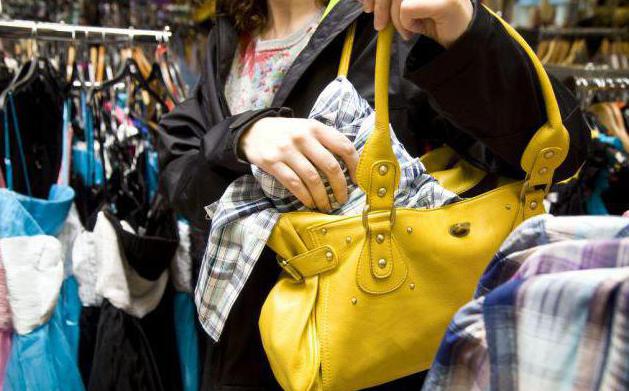
What is theft?
Shoplifting is common. Nevertheless, in order to bring a person to justice, you need to deal with legal terminology. So, according to the Criminal Code, the following actions can be recognized as theft:
- theft by a person of another's property in complete confidence that he acts secretly and is not noticed by other persons;
- theft of another's property in the presence of other persons who are not aware of this fact;
- during the seizure of foreign property, the actions of the attacker were discovered, but this fact did not stop him (this can also be qualified as robbery);
- the theft takes place in the presence of other persons who are aware of the essence of the attacker's actions, but the latter is confident in their consent.
Common schemes
Large or small theft in the store is the most common type of crime not only in domestic practice, but throughout the world. In order to effectively deal with this phenomenon, you need to understand what exactly to fight with. It is worth highlighting the four most common schemes:
- Spoilage of goods. Usually, in this form, shoplifting occurs. So, for example, buyers often eat weighted goods, can open a pack of juice, a package of chips and so on. Such actions cause not only material damage to the store, but also damage its reputation. No one will be pleased to buy something in the supermarket, on the shelves of which there are torn or empty packages.
- Theft of goods (that is, its removal outside the store). In this case, one can single out unprofessional thieves, as well as experienced "masters of their craft." The former usually hide their “booty” in their pockets or under their clothes. The second, in addition to the specified method, can actively use silencers of the magnetic signal, hidden pockets. They can also engage children in this.
- Preliminary conspiracy with the cashier. The bottom line is that the store employee deliberately punches at the checkout not all the goods. This is the easiest option. There may also be fraud with bank cards or the return of goods. Theft in collusion with the cashier causes the store significant damage.
- Substitution of goods. This means that more expensive goods can be transferred to packaging from under the cheaper. Labeling may also occur. If a self-service system operates, an attacker can stick a price tag on a cheap product. But the cashier doesn’t always notice this, especially during hard work.
- Open robbery. This is the direct removal of goods or cash from a trade institution through a threat to the life and health of workers. Typically, an attacker threatens a weapon. For such an act, the most serious punishment is provided, up to and including imprisonment.

Shoplifting: Punishment
Shoplifting is such a common occurrence that many do not even think about the possible consequences, taking this step. However, shoplifting is a serious crime. The punishment for him may be as follows:
- The minimum penalty prescribed by the Criminal Code is a fine of 80,000 rubles.At the same time, only theft of property worth more than 1000 rubles (at cost) is subject to criminal prosecution. Otherwise, the offense is considered administrative.
- The attacker must reimburse the store the purchase price of the stolen goods in five times, but not less than 1000 rubles.
- If the attacker was caught leaving the store and did not manage to dispose of the stolen item (that is, it was seized in safety), the punishment (fine or imprisonment) cannot exceed three quarters of the norm established by law.
- Deprivation of liberty in the event of a major theft, the fact of which has been proven, as well as in case of established conspiracy with third parties.
Shoplifting, although common, is extremely rare in litigation. As a rule, the security and management of the store agrees that the attacker will return the stolen goods to the place or reimburse its value if it was damaged. Especially condescending to retirees and minors.
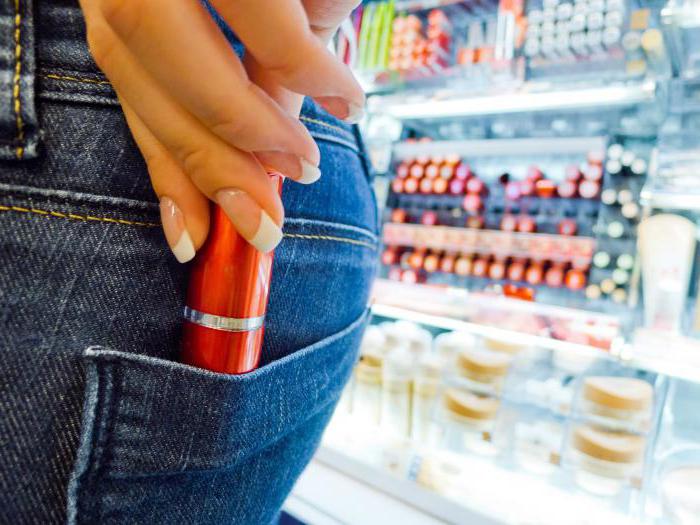
Theft of minors: punishment
Often, theft in shops and supermarkets comes across minors. Such penalties may be provided for them:
- Reeducation. Children from 11 years old can be placed in correctional facilities for this purpose.
- Fine. Since children do not have their own sources of income, this obligation is passed on to parents or guardians.
- Correctional work. Children 14-15 years old cannot be involved for longer than 2 hours a day, and 15-16 years old - up to 3 hours a day. At the same time, work is carried out in free time from studies.
- Deprivation of liberty. Perhaps from 16 years old.
How to identify a thief?
Frequent theft in a self-service store is mainly due to the fact that security guards cannot always recognize a thief. The average buyer has an established pattern of behavior. But the attacker may experience such deviations:
- from the first minutes of being in the store, a person behaves nervously and constantly looks around;
- wanders chaotically around the hall, returning to the same regiments several times;
- picking up the goods, the attacker begins to get nervous and look around;
- Before hiding the goods, the thief tries to approach other buyers, so that the attention of the guard was directed not only at him;
- Having noticed intrusive surveillance, an attacker is likely to abandon his venture and return the product to its place.
Some more statistics. Out of 10 intruders, only one comes out of the store. This is one reason to be vigilant. It is advisable to strengthen the protection in the cold season, when people wear voluminous warm clothing in which it is easy to hide stolen goods. Also, the number of observers in the hall should be increased during peak hours after 17:00.

How to deal with shoplifting
The purpose of the fight against theft is not to catch the attacker by the hand, but to scare him away from the store. The following protection systems can be used for this:
- Modern video surveillance system. The most effective are dome cameras. But considering that it is expensive, in the present equipment can alternate with dummies.
- Anti-theft systems, the most effective of which is acoustomagnetic. She justifies herself in clothing and cosmetics stores. In grocery outlets, radio frequency installations are more often used.
- Effective protection. In addition to employees in a special form, there should also be “mystery shoppers” in the hall who should monitor suspicious individuals from the inside without causing suspicion.
Shopkeeper Tricks
The article for shoplifting is quite serious. But if the attacker stole less than 1000 rubles (and this is the purchase price), he is likely to get away with administrative punishment. And most thieves will not be caught at all. To save their goods and money, store owners go to some tricks:
- the barcode is hidden on the inside of the label so that the attacker could not erase it;
- training personnel in the psychology of attacker behavior so that employees can identify it in advance;
- the fight against internal theft by establishing fines for shortages and bonuses for the capture of an attacker.
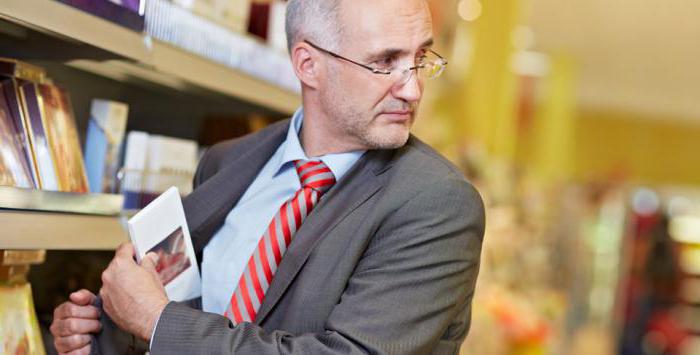
Anti Theft Tips
Theft is an extremely unpleasant phenomenon that causes considerable damage to the owners of trading enterprises. To minimize the likelihood of a shortfall after a visit by attackers, you need to follow these recommendations:
- Employees must greet the buyer politely, offering him assistance in choosing a product. Thus, a person has the feeling that he is under close attention.
- The space of the store should be organized so that there is a point from which the entire hall is clearly visible. If this is not possible, special mirrors should be installed.
- Particular attention should be paid to customers who wear baggy clothes or carry bulk bags with them.
- It is necessary to monitor the clear order of goods. So it will be easier for you to notice the shortage and in time to trace the suspicious buyer.
- Costly goods should not be located near the outlet. The same applies to small things that are easy to hide.
- It is possible that the attention of the seller or security guard may be distracted by the accomplice of the attacker. Therefore, the hall should have a sufficient number of personnel.
- The price tags must be firmly fixed to the clothes, and the packaging is well sealed. This is necessary in order to exclude the possibility of substitution.
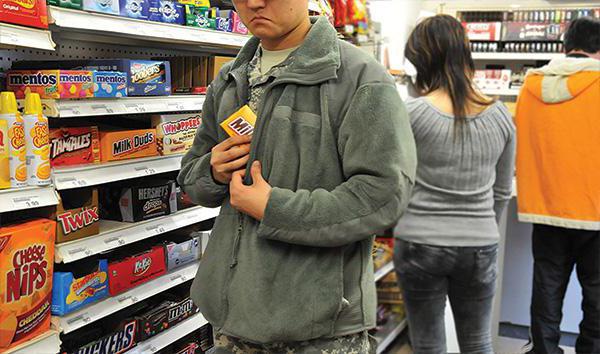
If accused of theft
Sometimes people face such an unpleasant situation when they accuse them of shoplifting with impunity. In this case, it is important to know your rights. So, you are not required to show the contents of your bags to a security guard or any other store employee. Screening is the power of the police. The maximum that store employees can do is to detain you in the store premises until representatives of law enforcement agencies arrive. And then, they will have this right only if they have the appropriate video evidence. If the police do not prove your guilt in stealing the goods (the search will not yield results), it is likely that the store administration will be forced to pay a penalty for a false call.
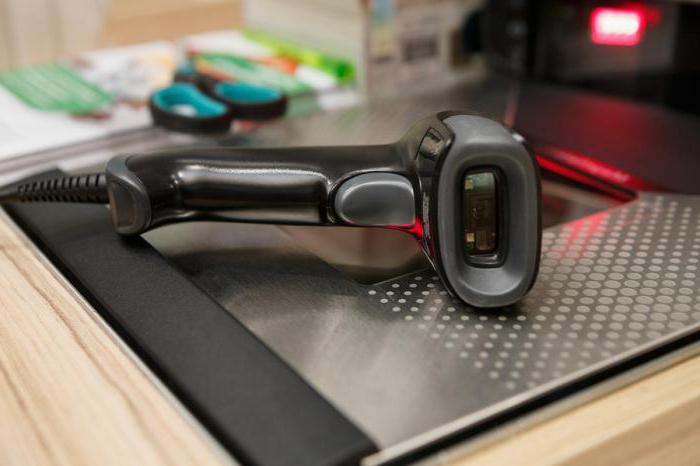
Evidence of theft
What to do if you are "caught"? Shoplifting must have concrete evidence. So, to bring charges, the security service must provide the following evidence:
- video recording of the moment when the goods were taken and hidden;
- footage of the movement with a hidden object in the hall;
- the fact of the absence of payment for goods at the checkout.
If your guilt is not proven ...
If the buyer was unjustly accused of theft, which was recorded by law enforcement officials, he has every right to file a lawsuit in order to recover compensation for moral damage from the store. If, due to your detention by store employees, you are late for a business meeting or fined at work, you are entitled to compensation for lost profits.
Theft as a hobby
For some people, shoplifting has become a bit of a hobby or even a sport. This phenomenon has received the name "Shoplifting" and has come to domestic open spaces from America. Moreover, people are engaged in this business not from poverty or want, but mainly from sports interest. There are even online shoplifter communities in which participants share experiences, tricks, and photos of their “booty”.
The philosophy of shoplifters is simple. If stores profit from customers, then why not the other way around? Moreover, shoplifters have calculated that their activities can reduce the entrepreneur’s profit by no more than 1-3%. The fact is that experienced thieves are never greedy. The main rule is not to take out goods worth more than 1000 rubles. This is in case they get caught. After all, the theft of more than 1000 rubles is considered large.
But mostly come across newcomers or, blinded by previous successes, shoplifters. The real "professionals" are developing their own tactics and even take advantage of the achievements of modern espionage technology. These can be silencers or receivers that can intercept the frequency of the security radios, bags with a reflective coating against magnetic frames and much more.
Conclusion
What punishment for theft in the store is prescribed by law, many do not even guess, because in most cases the thefts do not remain open, and if the guards catch the attackers, then everything is limited to returning the goods or money. To reduce the losses from theft, the owners of trading enterprises continue to try to improve the security system.